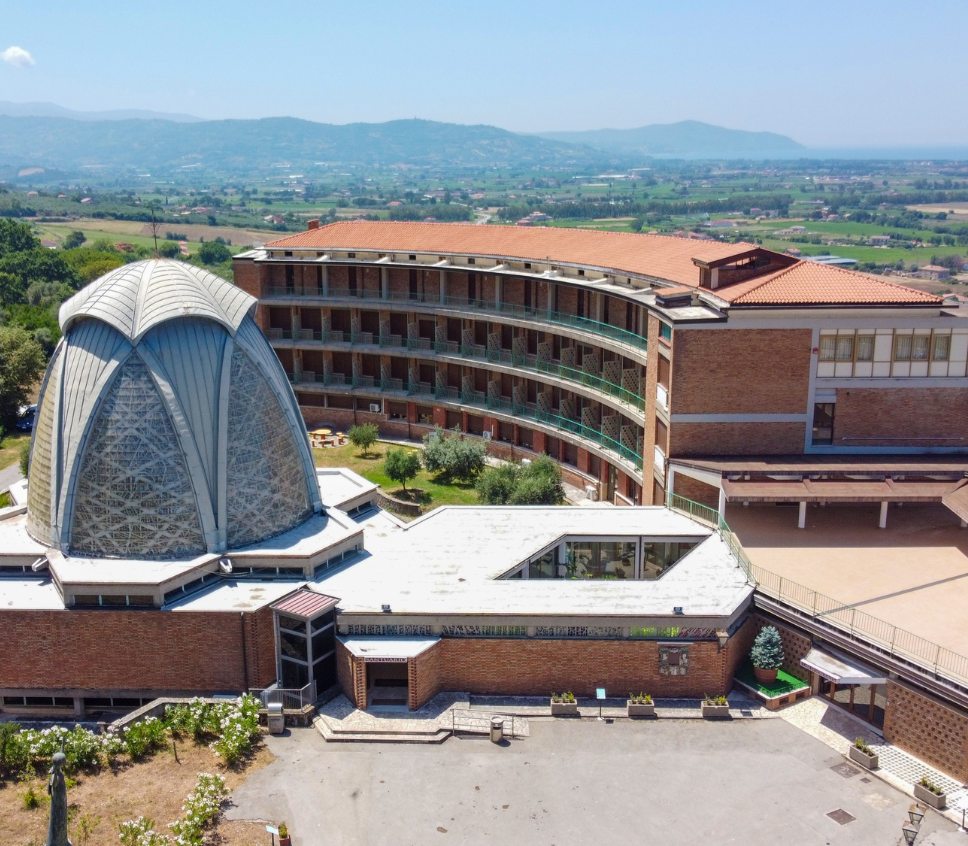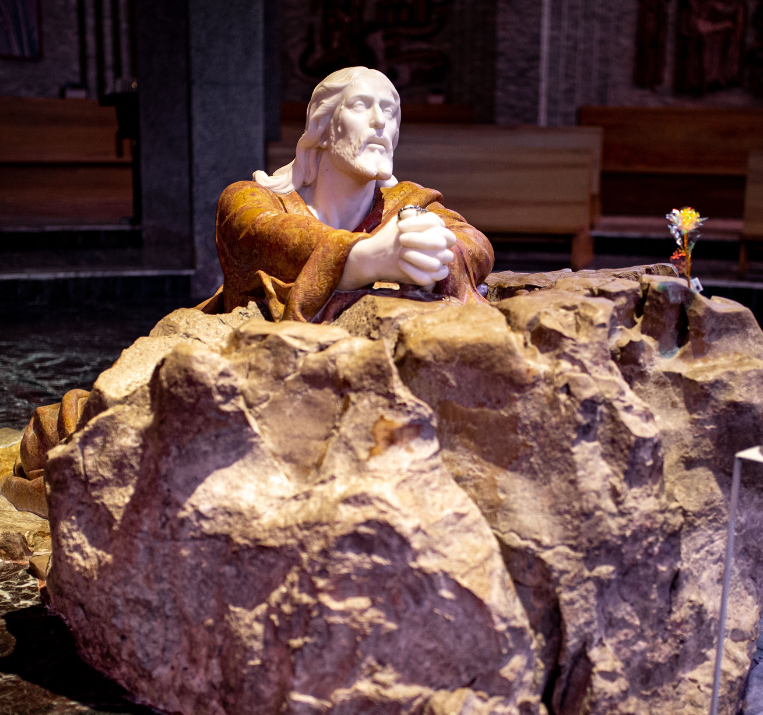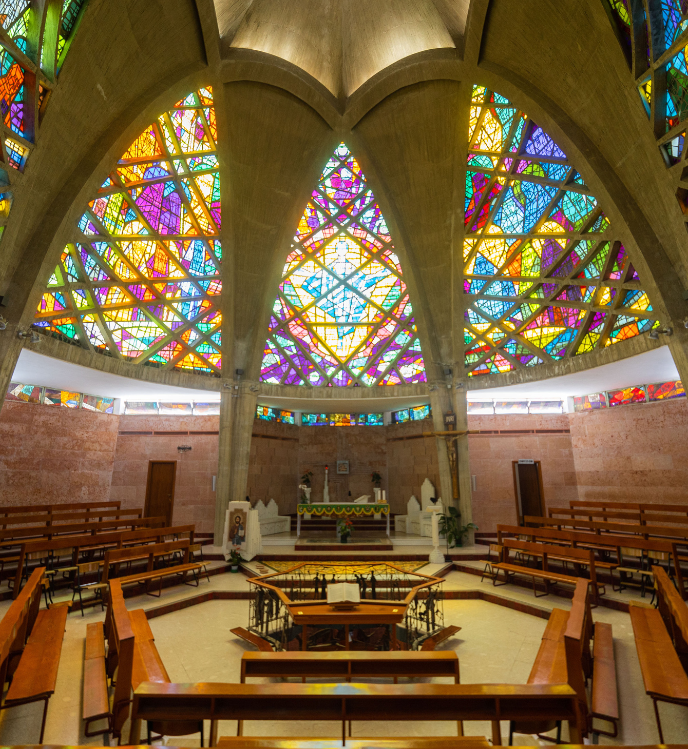CAR
Via A1/E45 or A24, exit Battipaglia, follow SS18 Tirrena Inferiore, SS166 and SP13a towards Via Getsemani in Capaccio
Via Getsemani, 6 - 84047 Capaccio-Paestum (SA)

Via A1/E45 or A24, exit Battipaglia, follow SS18 Tirrena Inferiore, SS166 and SP13a towards Via Getsemani in Capaccio
Take line 5320 “Salerno - aut.- Battipaglia – Capaccio - Roccadaspide” and get off at the Via Petrala stop. Continue on foot for 36 minutes
Take the regional train to Cosenza and get off at the “Capaccio Roccadaspide” stop. Reach the bus stop and continue with line 5320
The Sanctuary is the brainchild of Prof. Luigi Gedda, who, after giving a lecture in the Diocese of Vallo della Lucania, went to the hills of Cilento to pray Virgin Mary. From that beautiful place, which offers a magnificent panoramic view of the Gulf of Salerno, the Professor's initiative to create a spirituality centre for the Churches of southern Italy began. In Rome, he proposed his idea to Dr. Mario Cristallini (Administrator of the Getsemani Foundation) and Architect Ildo Avetta (author of the Getsemani Sanctuary in northern Italy). In the spring of 1956, planning began, with the specific obligation to maintain all the ancient oak trees. The workers on the project (bricklayers, carpenters, electricians, etc.) were mostly local, and many of them, now elderly, remember that period with pride.
The Sanctuary was built on two floors: the upper church is surmounted by a dome with polychrome stained glass windows. In the lower church there is the striking marble statue of Jesus praying in Getsemani and, on the walls, artistic ceramics depicting saints venerated in southern Italy.
The entire complex is located in a park, where the paths of the Stations of the Cross and the Rosary are located, and where there is also a modern stone amphitheatre. In front of the Sanctuary one can admire the bronze statue of Virgin Mary of the Moon, placed there in 1970, shortly after the first men landed on the Moon. In addition to the crypt where the statue of Christ is placed, there is the Virgin of the Assumption, which reaches a height of five metres, and the Immolated Lamb, placed above the high altar in the centre of the church.




